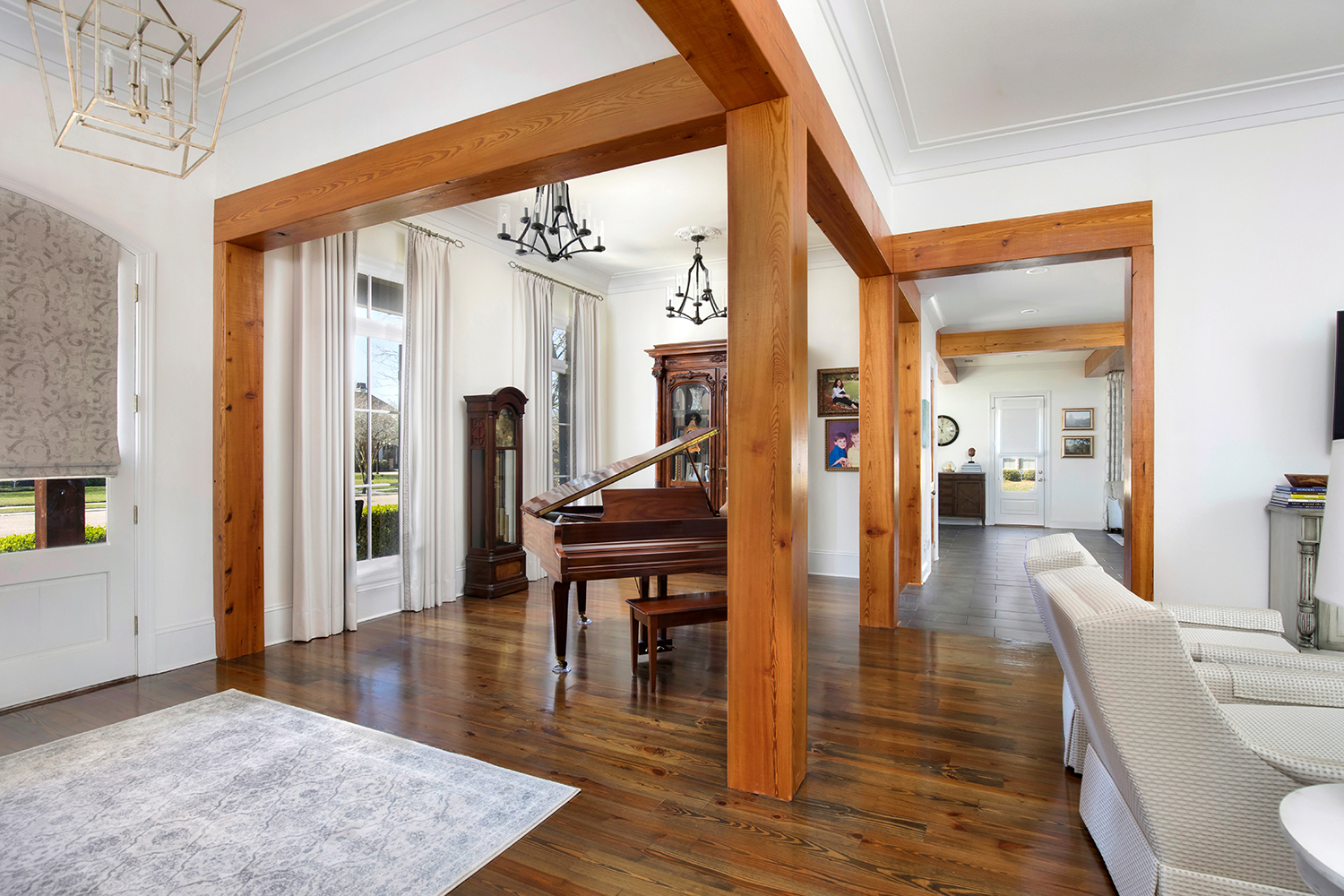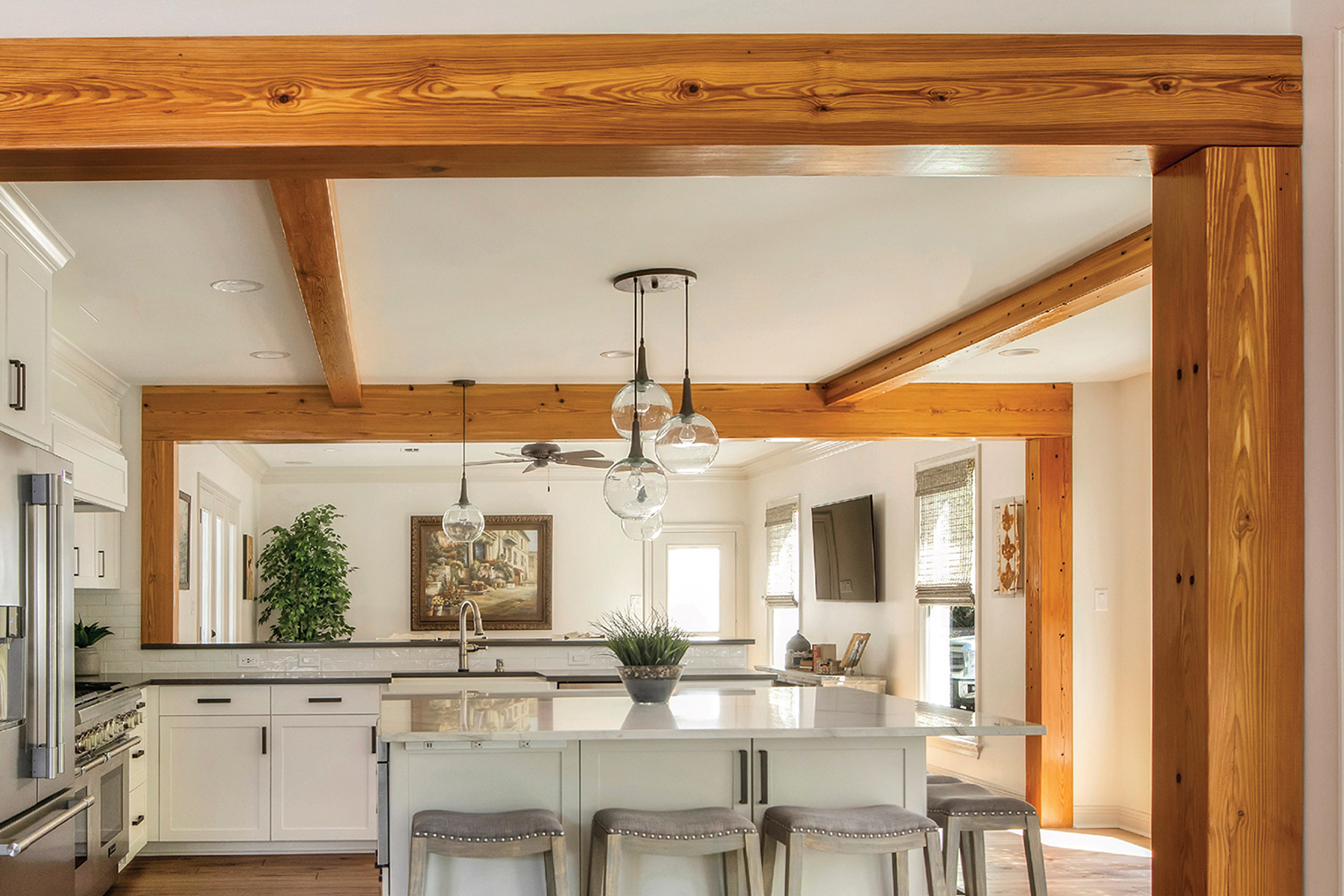Most people are familiar with “box beams” or “mantels,” but throw out “pilaster,” and you might get some blank stares. This vertical substrate, which has its roots in classical Greece architecture (remember how we said what seemed new was actually old?) is experiencing a revival in modern homes. Despite their funny name, pilasters can make a great addition to your next new-build or renovation project.
A Pilaster
A modern pilaster’s closest cousin is the beam. Both are vertical substrates that usually extend from the ceiling to the floor and can be mounted near walls or door openings, adding a decorative architectural element to the room’s design scheme. The Olde Mill’s Posts and Pilasters are also completely hollow, allowing space for cords, ducts, and framing materials. However, there are also some major differences between pilasters and posts. Whereas our posts are 4-sided, with the top and bottom left open and hollow for cords or ducts, pilasters have only three sides. This means that they can be mounted to the wall, instead of the ceiling and floor, making them great for construction using materials that are difficult to add brackets to. Posts can come in any number, depending on the needs of the space, but pilasters almost always come in pairs. They also have a slimmer, sleeker profile than posts, which blends well with homes or businesses decorated in a more modern aesthetic.
What styles do pilasters work with?
Pilasters can work with a variety of design aesthetics, from farmhouse to ultra-modern. The key to matching them to your style is the finish. If your home is more rustic or cottage-like, you’ll want to use a warmer stain, to allow 100-year-old pine wood grain to really shine through, and a more raw finish. If your tastes are more modern, adding darker stains, or even painting the pilasters, will give you the clean lines that you want.
How can I incorporate them into my space?
In today’s design, pilasters are most often used for framing and incorporating existing elements of a home or business. Do you have a refrigerator that seems to stick out in the kitchen? Adding flanking pilasters can easily hide the unsightly side, making the whole kitchen look more finished. What about a cabinet or bar in the living room? A pair of flanking pilasters will create a cozier, niche-like space, converting the furniture into a work space or a wet bar. The fact that our pilasters are made out of strong antique pine wood and extend all the way to the ceiling makes it easy for contractors to add shelving. Of course, there are endless possibilities! We’ve used pilasters in bathrooms to make framed vanity areas, in outdoor seating areas to create grill spaces, and even in our office. Last year, we used pilasters in a Destin home to frame architectural wooden pier posts, giving the homeowners some room for storage and display.










